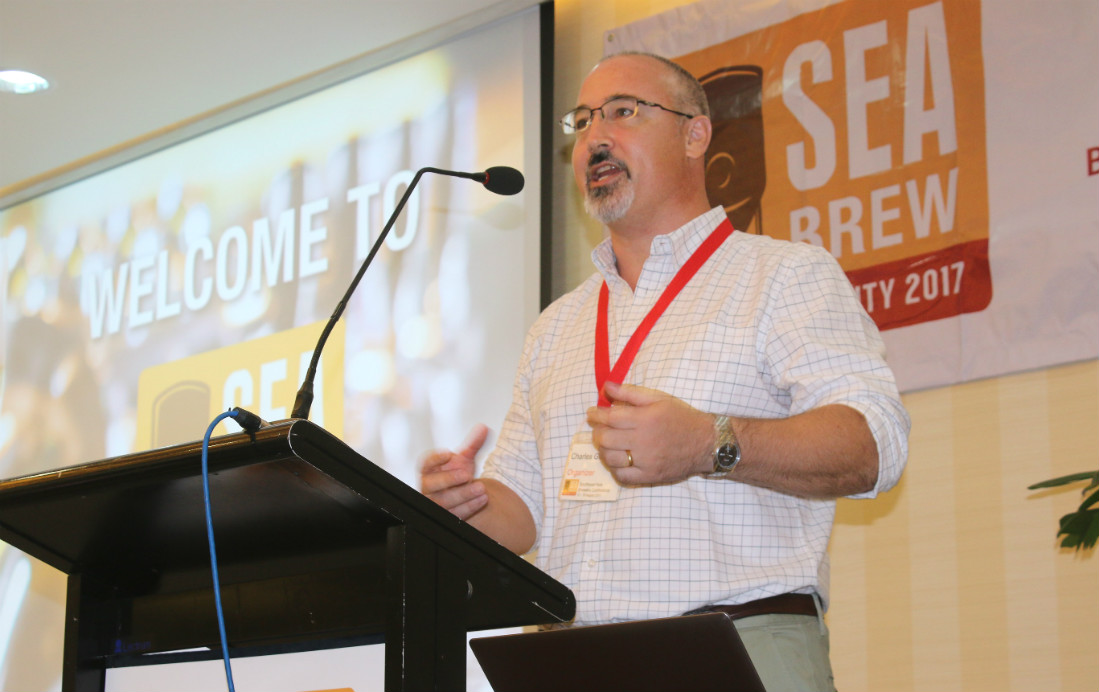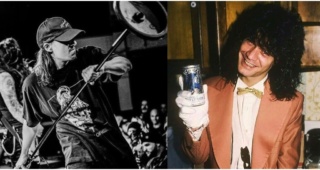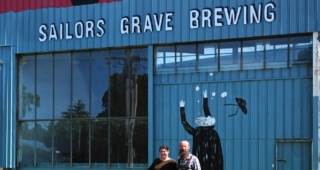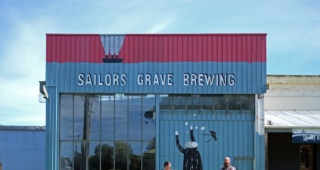We first met Charlie Guerrier in 2012 at Brewerkz during the Singapore Craft Beer Week launch party. A former director and general manager at places like Oosters Belgian Brasserie and Eastern Craft Holdings in Singapore, Guerrier has coordinated a number of successful beer competitions and festivals in Singapore and Japan, including the Asia Beer Awards and CRAFT Singapore. Today Guerrier is director and organizer of SEA Brew, Southeast Asia’s only annual conference and trade fair for the brewing community.
Now in its fourth year, the roving SEA Brew conference heads to Manila on June 21 and 22. In advance of the event, we catch up with Guerrier over the phone to get his take on the state of Southeast Asia craft brewing, and to find out where he feels are some of the best places in the region for traveling beer enthusiasts to visit.
Beer Travelist: In terms of beer, things have obviously changed quite a bit since we met in 2012, not just in Singapore, of course, but across Asia.
Charles Guerrier: The major thing about the industry is that it shows the typical Asian resilience. We’re coming up to speed very quickly and catching up with the rest of the world. The other thing I find that’s amazing is that there’s hardly any brewing education going on over here—the brewers are doing it themselves.
You’ve probably noticed yourself in Thailand how within a year or so the quality of beer has jumped rapidly, and I think probably moreso than it has in places like the Philippines. Filipino brewers are learning as they go, gradually developing their recipes, and getting to learn more and more about how brewing is done. On the other hand Thais, because they’re going overseas, are now brewing with professionally trained brewers, so their learning curve is much steeper.
Overall, we’re seeing much better quality beer coming out of Asia than we saw even just two or three years ago.
BT: Are you seeing more Asians brewing here? Four or five years ago it was very much an expat-driven brewing community, but it seems like Asian craft brewers have become much more prevalent.
Guerrier: Oh, definitely. I think the two true local markets would be Thailand and the Philippines—in those countries pretty much all of the brewers are locals. Then you see a place like Vietnam, where there’s still a lot of foreign brewers, but the reason why you’re seeing the quality of beers coming out of Vietnam now is because you’ve got those professionally trained foreign brewers coming in.
At the same time, those foreigners are acting as inspiration to the local brewers and other breweries in the region who are looking at Vietnam and setting out to get their beers up to that quality. It’s helping spur the industry in these other countries.
BT: So you’d say that Vietnam is leading the way in Southeast Asia?
Guerrier: They’re definitely leading the way, but in terms of the local brewers it’s Thailand and the Philippines at the top.
BT: Are there any breweries in Vietnam and Thailand that stand out?
Guerrier: In Vietnam, obviously you have Pasteur Street, Heart of Darkness, East West Brewing, and Platinum—I think those four are at the head of the pack. They all appeal to a slightly different demographic, which is good because they’re not feeding off each other and that’s helping to open the market. They all have slightly different dynamics.
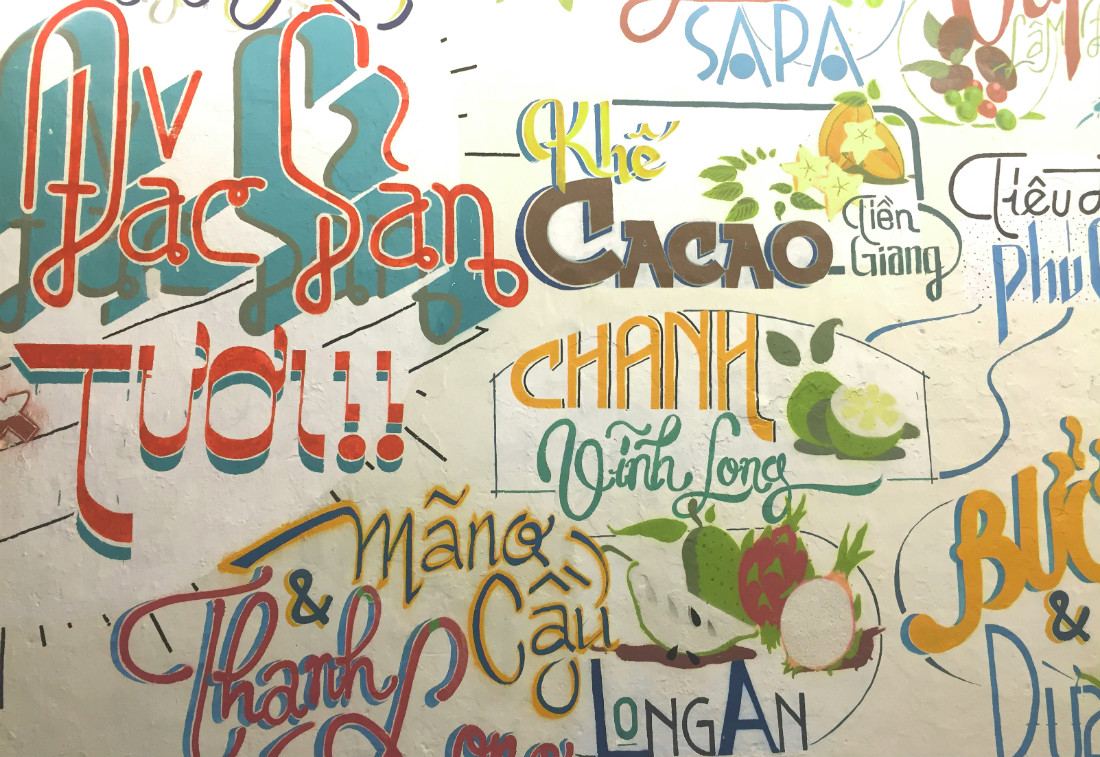
In terms of Thailand, Sandport are starting to bring some very nice beers out. One of the new guys on the scene is Outlaw Brewing, which is producing some very nice beers, as well. Mahanakhon Brewery has a fantastic wheat ale. You’ve got also got a new group of craft breweries who are looking at a much more mass market of craft, and it sounds like there’s going to be four or five new breweries popping up in Nonthaburi within this year or early next year.
Related: Come Hell or High Water, a One-Night Stand with Bangkok’s Craft Beer Guerrillas
BT: It seems like the arrow for Thai craft brewing increasingly points to Nonthaburi.
Guerrier: Quite a few of brewers seem to come from there, and what they want to do is make that the center of craft brewing; at the moment it certainly looks like that’s what going to happen. They want to have four or five microbreweries up there, and from there work out how they can seep into Bangkok, perhaps with their own taprooms, and work out ways around the regulations.
BT: Thinking just as an everyday traveler and beer drinker, which cities do you most enjoy visiting in Southeast Asia when it comes to enjoying the local beer scene?
Guerrier: Ho Chi Minh City is great fun. The nice thing about it is that you can just wander around in the center of the city and there are a lot of bars you can get to fairly easily, which is obviously an advantage. In typical Thai fashion, Bangkok has bars popping up all over the place, so if you do a little bit of research you can find all sorts of bars in strange places selling craft beer.

I think there’s a lot more exploring to do in Bangkok, so if you’re an adventurous traveler that city is good fun. The last time I was up there we hired a longtail boat at Sathorn Pier for four hours and took the boat up the Chao Phraya River to Chit Beer, had a couple rounds there, and explored a bit of Koh Kret island.
BT: You lived in Singapore for quite some time. Any favorites here?
Guerrier: Well, I have to be careful here now, don’t I? (Hahaha) Obviously I like it down at JiBiru, which is a great people-watching place. Singapore is a very different market because it’s very distributor-led, as opposed to brewery-led, so I think from the distribution view Freehouse is a great place. When I’m back later this month I’m looking forward to going to Brewerkz because I know there’s a new brewmaster. Little Island is great, too, sitting out there in the middle of nowhere drinking good beer.
BT: How does the Asian beer market—and specifically craft beer market—differ from those in other parts of the world? What kind of unique challenges do breweries have here?
Guerrier: Well, the scene is very new, and Asia doesn’t have the kind of history that places like the US and Europe have in terms of beer. People are trying all these beers for the first time, whereas in for example the UK, we have the real ale industry and people have been aware of these different types of beers for a long time. When people are trying new beers, that’s always going to take time and hard work to change people’s drinking preferences and open them to new ideas.
You have to educate the population, which is going to be tough. I keep coming back to education, but you’re not only educating consumers on new flavors, but the brewers are also learning their trade at the same time, so it’s tricky figuring out how to match that up. Maybe a brewer might not get the brew exactly right in how he or she wanted to make it, so how do you communicate that to the consumer?
Related: Brewlander Rises in Singapore, and the Crowd Goes Wild, Wild, Wild
Every given brew has a different nuance to it, of course, but for the consumer who is expecting the exact same flavor they’re used to every single time, they’re not going to be used to these subtle changes in flavors.
BT: Based on your experience, how can craft bars, breweries, and event organizers break out of the so-called “craft bubble” and start reaching a wider general audience?
Guerrier: I’m not sure anyone has the answer at the moment. I think there’s a lot to be learned from the big boys because they sell beer and they sell it very well. You look at AB InBev—they control 30% of the world’s beer market. They’re obviously doing something right. You may not agree with some of their market practices, but they have 30% of the world beer market.
I think you have to look at what these guys do and learn from what they do. Obviously there isn’t the same amount of money in craft beer as there is in big beer, so you have to take the lessons and figure out how to adapt that to the craft market.
Another thing, as well, is that everybody is in the industry because they love what they’re doing. You wouldn’t be in the craft beer industry if you didn’t love it. However, everybody doesn’t necessarily have the experience to do what they need to do to the best of their ability.
Take the distributors, for example, in say Singapore. They love the beer and they love what they’re doing, but very few of them actually have food and beverage experience. As they bring in the beer, then, they’re learning all the time. How do they speed up their learning process? Everybody is going to make mistakes, but how do you learn from those mistakes—and others’ mistakes—and try not to make them the next time out?
You can be the world’s greatest brewer, but you’re a brewer because you like to brew beer, not because you like to market and sell beer. When you look at the some of the operations in Vietnam, I think they’re set up a lot more professionally. They have a marketing department, and then they have a brewing department. For example, if you take all those Vietnamese breweries I mentioned earlier, they all have marketing and sales teams. They have seasoned professionals.
A lot of brewers in the region are moving from homebrewing to commerical brewing, so they’re moving from a hobby to a business. How do you upscale your operations, your sales, and your marketing? I think that’s where there’s a little bit of struggling going on in the region at the moment. We hope that these guys will come to SEA Brew and learn at the conference, because we see it as an education platform. We designed the programme for there to be definite takeaways from everyone attending.
BT: Why is Manila a great destination for SEA Brew 2018?
Guerrier: We do move SEA Brew around so that people can see what’s going on in other markets. In Manila, the industry is booming. In terms of breweries, I think it’s the fastest-growing market in the region, and the hospitality of the Filipinos is absolutely amazing. There are wonderful people, very welcoming, and they’re going to throw a fantastic party when all the brewers turn up. And if we didn’t go to Manila this year I think they’d never talk to us again! (Hahaha)
The Filipinos really want to develop their brewing industry, so by taking the conference to Manila we’re making it easier for them to come to SEA Brew, learn more, and network with other brewers throughout the region, as well.
To get back to one of the challenges, finances are obviously a challenge because there isn’t the same level of disposable income in most Southeast Asian markets as there is in places like Europe or America. I think that also comes back to the brewers, as well. They don’t have huge finances to be running around the region and going off to the United States or Germany for brewing courses, so it’s important for us to be able to bring these learning opportunities to them. It makes it a lot more accessible for the local brewers.
BT: It does seem like there’s a lot of ambition in the Philippines to make better beer–and specifically when it comes to IPAs and double IPAs.
Guerrier: There’s a struggle between “bang for your buck,” where people want to get as high of alcohol volume as they can for a reasonable price, and actually producing beers that are going to expand the market. The ideal beers for Southeast Asia are nice and light pale ales because it’s a summer drink and it’s hot every day of the year, but then you have these people looking for the big double IPAs.
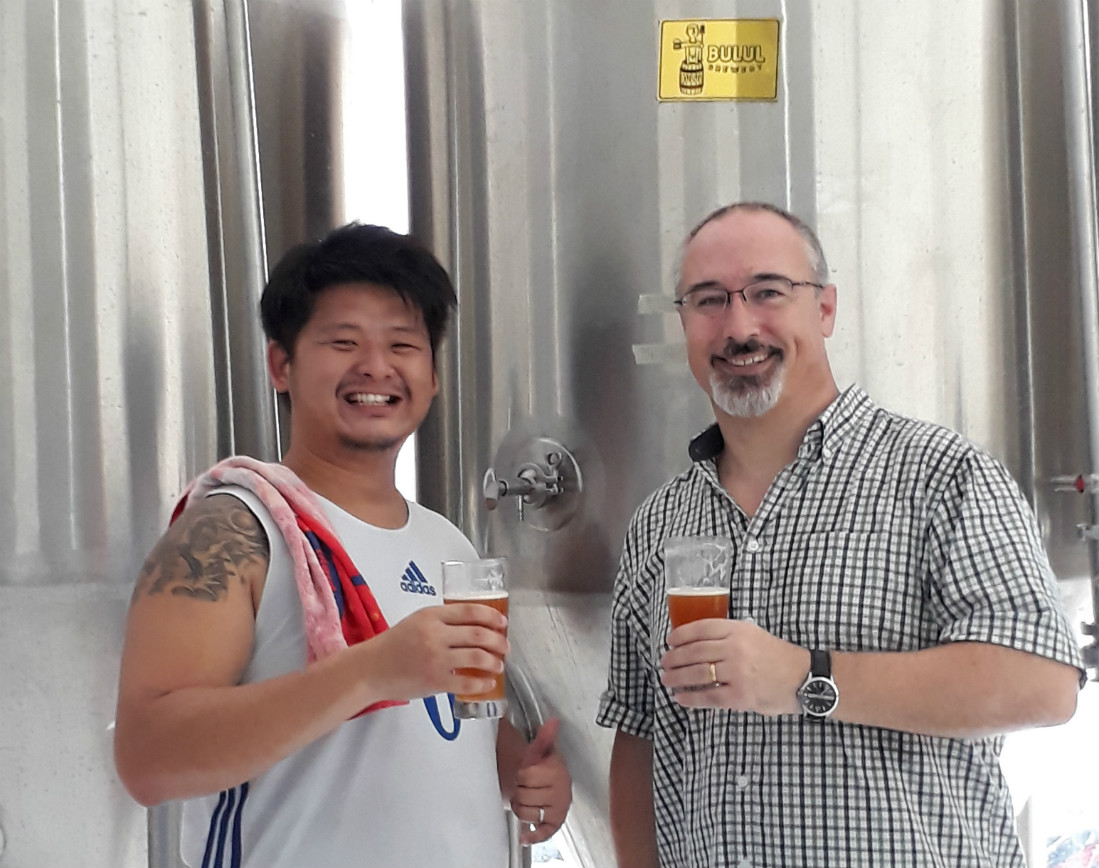
Where do you focus your brewing? Do you focus on the lighter beers, which are really better for expanding the market, or do you say, look, I need to sell my beers now so I’m going to go for the big beers that the people who are buying craft beer at the moment want. It’s difficult because a lot of people are running very small operations and need to sell every batch they produce.
Anoter one of the struggles in the region’s craft beer industry is figuring out what big beer is going to do. Is it a necessary evil and something you can live with? Big beer is always going to be there, and more and more they are producing “crafty” or faux-craft brands. Do they play a part in opening the market for you? How do you ride on the wave they’re producing?
They have the finances to be able to open up the market. They have a lot more freedom in Asia to throw their money around, buy contracts—effectively shutting out other craft producers. It’ll be interesting to see what angle they take in Southeast Asia, and how that opens up the market because I think it will.
BT: Like you said there’s no history of craft in Asia.
Guerrier: One thing you do have to say for the big boys is they produce good, solid beers that are the same every time. You can’t knock that; they brew incredibly well. You can’t as a small, craft producer fight them on level ground. I think the craft guys need to work together to figure out what to do with it.
This is one of the things we’re going to be discussing at SEA Brew in the brewers’ assocation forum—is there a role for associations in the craft beer market? Do the small brewers need to band together in order to get themselves heard in the market? Are they going to get anywhere if they continue as individual breweries, or do they need to work together to have an active association that works well with them to develop, like they have in the US.
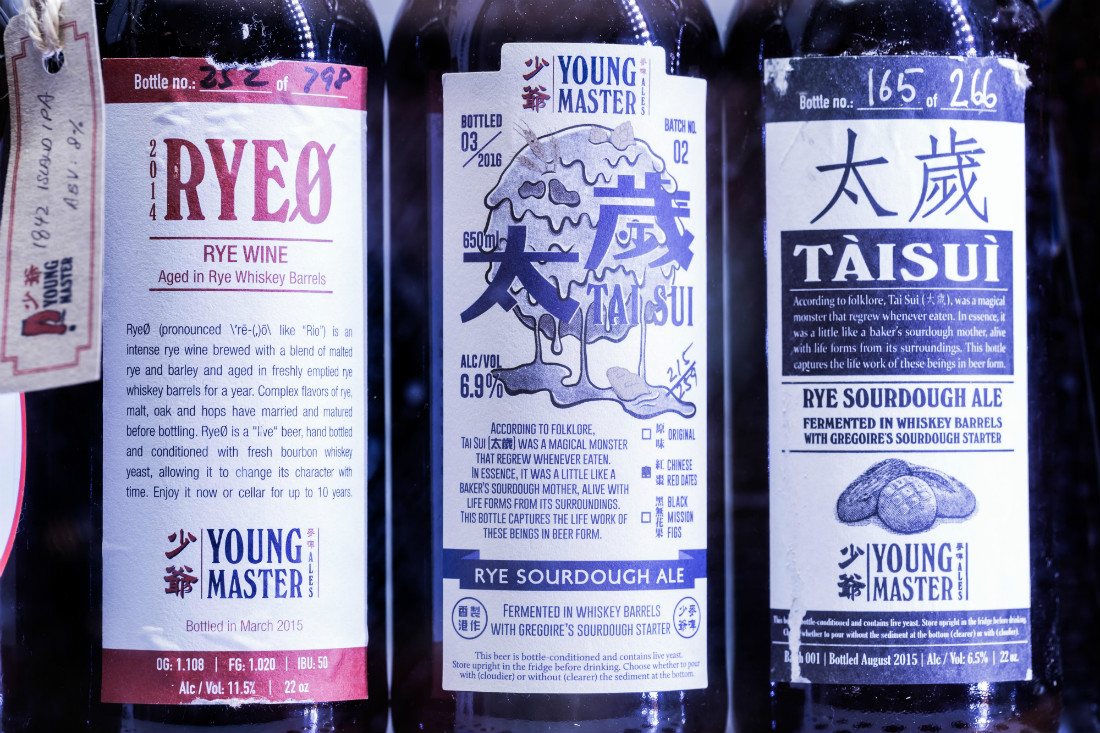
BT: You have an interesting lineup of brewers from major craft breweries speaking at the conference this year who should have interesting perspectives on topics like that. There’s Mikkel Borg Bjergso (Mikkeller), Paul Holgate (Holgate Brewhouse), Carl Setzer (Great Leap Brewing), Rohit Dugar (Youngmaster Ales), and Youichi Kiuchi (Kiuchi Brewery), among others. Did your planning for this year’s programme differ from previous years?
Guerrier: After each conference we go back to the attendees and ask them what they liked and didn’t like, and then try our best to improve things the following year. Brewers obviously like to hear and learn from other brewers, so we wanted to get more brewers in to talk about what they’ve done and why they’re doing certain things.
Paul Holgate will be doing a session on kettle souring and quality control. He’s a huge proponent in Australia of independent craft, as well, and is pushing for the labeling that would indicate whether it’s craft from an independent brewer or craft from one of the big boys.
Carl Setzer is launching a collaboration program for the next six months with breweries from all over the world, and he thinks that people are paying too much for craft beer. He’s going to be talking about that and looking at the dynamics of it. Basically, he’s saying that he can brew beers in other parts of the world, bring them back, and still sell them at less than you may be paying for a beer from the big boys. That’s going to be very interesting, and again he was instrumental in launching the China brewers assocation.
Related: In Hong Kong, the Secret of Young Master Ales’ Success
What we’ve also done this year with our sponsors, who obviously want and deserve the opportunity to talk, is sort of impressed upon them that their talks need to very much be learning focused so there’s key takeaways from every session. For example, a hops company might come in and do a sensory session, instead of just pushing a product. It’s very important that you grant the brewers enough credit to make the connection between a presentation and the company.
BT: Have you considered adding more of a consumer element to the conference?
Guerrier: At the moment we’re very much industry focused for the conference itself. However, what I’d like to see is more consumer-based events going on around the conference. The original SEA Brew sprung out of Singapore Craft Beer Week, so we had a week of events going on around the conference. You have so many of the region’s brewers in town for the conference, and also people from around the world, as well. It’s a great opportunity to spread the word of craft, so I’d like to see the conference spur the legacy of similarly week-long events around that region, and taking advantage of the fact that we have all these people in town.
BT: Do you have SEA Brew 2019 pegged for a specific destination yet? Anything else in the works?
Guerrier: It’s probably Thailand. We’re sourcing some venues in Bangkok at the moment; it feels like the natural choice.
We’re also going to be launching a new regional beer awards later this year. We’ll actually be launching it at SEA Brew, and it’ll only be Asian-brewed beers. The aim is to get feedback to the brewers. We’ll have a professional panel of judges, and the judging notes will be handed back to the breweries. It’s just to help all these breweries develop their beers.
###
SEA Brew 2018 takes place in Manila June 21 & 22. Tickets are available here.
Disclosure: Beer Travelist hosted a panel discussion at SEA Brew 2017. We are (unfortunately) not participating in Manila, and independently contacted Guerrier this year to request this interview.


